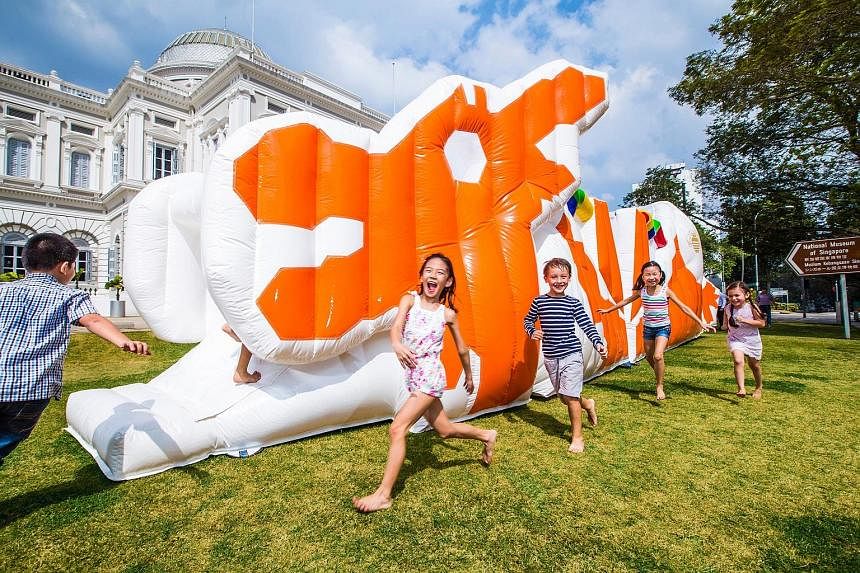Bouncy castles - those inflatable fortresses that can propel you into the air with one swift jump - seem to be the epitome of fun for kids.
Visit the front lawn of the National Museum of Singapore before Aug 10 and these giant blow-up playgrounds, part of the children's exhibition, Masak Masak, will welcome visitors in colourful designs that recall the mosaic playgrounds from the 1970s and 1980s with their trademark dragon, watermelon and elephant shapes.
Ms Christie Chua, the museum's senior assistant director for audience development and partnerships, tells Life! that behind all the fun lies some serious planning.
Firstly, the bouncy structures had to be created from scratch - these are not the regular castles you see at your neighbourhood market.
The museum team sent images of existing Housing Board playgrounds dating back to the 1970s to its vendor to recreate.
The design of the bouncy castle "had to still retain the original look and feel of the actual mosaic playgrounds", adds Ms Chua.
"So if the playground design incorporated a slide, we wanted the bouncy castle to have a slide."
This included choosing colours which closely matched those of the old playgrounds. There were several revisions before they settled on the final designs.
And then on to the fun bits: The team got to decide what kind of obstacles each castle would have, such as a ladder or a slide.
There was also the very serious business of "stress testing" - the museum staff got a chance to test out the castles before they were officially opened to the public.
Of course, safety was still of utmost priority. For example, Ms Chua reveals that the height of the dragon playground is made lower this year compared with that last year, to make it easier for younger children to clamber onto it.
Also, access to the bouncy castles is restricted to weekends from 10am to noon and 4 to 6pm, as the material the castles are made of can get quite hot in the afternoons.
The response has been good - last year's inflatable dragon playground drew long queues of children - prompting the museum to introduce a new design this year, that of the dove playground.
Adults are also drawn to these inflatable playgrounds on the front lawn of the museum for the pure nostalgic appeal, although the recommended age range for those getting onto the inflatable structures is three to seven years old.
But it is not all fun and games. Ms Chua hopes that the playground designs will spark conversations between parents and their children.
"With only a few of these mosaic playgrounds remaining today, we hope that our visitors can share their treasured memories of these playgrounds with their young ones," she says.

